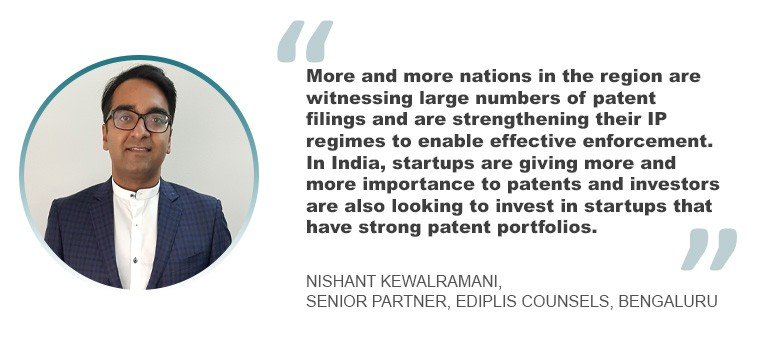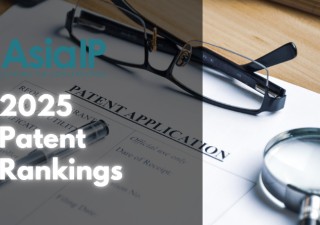Patents are for the weak?
30 November 2022

Elon Musk recently told a CNBC audience that “patents are for the weak.” Intrigued, Espie Angelica A. de Leon asked if lawyers agree with Musk, or if the SpaceX owner was, perhaps, out of orbit.
Rocket ships looming in the background, business magnate and innovator Elon Musk and popular American TV host Jay Leno stand on a grassy area, engaged in a conversation about space and the possibilities of the future. Brushing his windswept hair back, Musk, clad in a black T-shirt emblazoned with the words OCCUPY MARS in large white letters, utters words such as “airframe”, “heat shield”, “payload”, “getting to orbit” and “reusable rockets” to Leno. Behind them, building materials and equipment are parked on a road in front of the rockets, vehicles moving along to indicate that work is being done onsite.
This Leno-Musk encounter is featured in an episode of CNBC’s Jay Leno’s Garage, shown in September, in which the 51-year-old SpaceX founder, CEO and chief engineer gave the host a tour of the SpaceX Starbase facility in Boca Chica, Texas.
Among other things, Leno is shown a prototype of the SpaceX Starship, a reusable rocket with a cargo room that’s over 10,000 cubic feet more than that of a 747 jet. Musk tells Leno it is constructed with a specially formulated stainless steel body.
Then comes Leno’s question: “Is that something you patent?”
“No. We don’t really patent things,” Musk immediately replies to Leno. ”I don’t care about patents. Patents are for the weak.”
Musk told Leno that patents are generally used as a blocking technique. “They’re used like landmines and warfare so they don’t actually help advance things,” notes Musk who is also CEO and product architect of Tesla, Inc. and new owner of Twitter, Inc.
He claims that all of his companies’ patents are open source, free for use by anyone.
Then comes OUR question: Is this true, particularly in the Asian region where many countries have weak patent regimes? Are patents really for the weak?

“Not true,” said Jian Ming Chang, associate principal at Dentons Rodyk & Davidson in Singapore.
“Many countries in Asia are beginning to see the importance of IP – in particular, patents – as a form of motivation to local and foreign creators to share technical know-how and conduct business activities in their countries. The Asian countries that do not focus on IP lose out in terms of technological advancement, and would generally be less advanced compared to the countries that embrace IP,” said Chang.

“Musk says that patents are blocking techniques that prevent others from innovating. Musk is wrong,” said Editha R. Hechanova, president and CEO at Hechanova and Co. and managing partner at Hechanova, Bugay, Vilchez & Andaya-Racadio in Manila.
“With patents, inventors are challenged to improve or disprove whatever patented inventions already exist. I think man’s mental capacity is huge and there are many possibilities waiting to be explored. The patent system gives a company or the inventor the freedom of choice of what to do with their invention – keep it as a trade secret, obtain patent protection to have a commercial monopoly or give it away,” she explained.
Hechanova affirmed that IP awareness is indeed growing in Asia.
“With much of the push coming from IP offices, inventors take pride in filing or having obtained a patent for their technologies, hence, would probably be able to relate more to Steve Jobs than Musk,” Hechanova said.

“More and more nations in the region are witnessing large numbers of patent filings and are strengthening their IP regimes to enable effective enforcement,” added Nishant Kewalramani, senior partner at Ediplis Counsels in Bengaluru. “In fact, the Asian continent accounts for approximately 50 percent of the overall patent filings around the world. From an Indian perspective, we are witnessing that startups are giving more and more importance to patents and investors are also looking to invest in startups that have strong patent portfolios.”
“I don’t think Elon Musk should be taken seriously when he talks about patents. He says one thing,” said Hechanova, “but does the opposite.”
The SpaceX CEO, who is also an angel investor, owns several patents. According to Hechanova, Tesla continues to apply for patent protection for new technologies. Not to mention that the Texas-based electric vehicle manufacturer’s patent pledge has a number of conditions before the patent can be used freely.
In another interview, Musk had this to say, eliciting laughs from the audience: “When I was first starting out developing technology, I got lots of patents and thought this was a good thing and then I sort of discovered that a patent was really like buying a lottery ticket to a lawsuit.”

For Christopher J. Rourk, a partner at Jackson Walker in Dallas, patents are, to a certain extent, for the weak. The reason for this is that small firms and individual inventors are inherently weaker than companies that are larger and better-positioned capital-wise.
“Small companies and individual inventors can develop important innovations that can be easily copied by larger, well-capitalized companies and should rely on patents to increase their leverage in the highly-competitive commercial marketplace,” Rourk explained.
Though he confirmed the existence of several studies indicating that strong IP protection does foster innovation, he added there are studies that yield the opposite conclusion as well. Rourk stressed that any meaningful discussion about the value of patents should specifically address these studies.
The cost of not having patent protection
What are the heavy costs of not securing patent protection for an invention or technology?
“Should a company or inventor decide to commercialize a patentable invention without obtaining a patent, then it is open season to copying,” said Hechanova, “and there would be no way to stop it.”
And because technology can be easily copied, generic versions of a product can instantly flood the market.
“Even cheap knockoffs are not uncommon. All this results in the inventor or company investing in R&D not being able to recover research costs, and ultimately leads to stifling innovation,” Kewalramani explained.
“If one is allowed to copy technology freely, one may not want to innovate or improve on existing technologies,” said Chang.
Based on their statements, it may actually be the absence of patents, not the existence of patents, that is the stumbling block to innovation, thus stifling advancement or progress.
“More importantly,” added Chang, “creators would likely suffer loss of market share when conducting business activities in a country that has no patent protection.”
“If the idea is to grow the market, and let the entity that markets its product or services better take the lead, then certainly the inventor or the company which created the invention, could find itself losing everything, unless it be the one who becomes the market leader. This is a recipe for disorder,” said Hechanova, “particularly when most countries’ gross domestic product relies on micro, small and medium enterprises.”
“R&D and patents go hand in hand and any organization investing in R&D should look at patents as an effective tool for competitive business advantage,” revealed Kewalramani.
Rourk agreed that the cost of not having patent protection can be significant. But, he emphasized, this is the case only if the product or service developed by the company or individual inventor is of value to others, and is copied.
“Most patents are never asserted against an infringer, and the valuation of infringement and effective ways to compensate inventors for the true value of their patented inventions are important components of the societal value of patents that are often overlooked. Until a more effective way of determining the true incremental value of a patent claim and compensating inventors for that true incremental value is developed, it will likely remain the case that patents that protect innovations with less than a great deal of value will only be able to be asserted for a nuisance settlement value, because the cost of determining damages in a litigation context will be greater than the value of those innovations,” said Rourk.
Patents and the common good: How to balance?
How then can a business enterprise or individual inventor strike a balance between patent protection and promoting the common good, as in promoting progress via innovation instead of stifling it as Musk said patents are wont to do?
“Every company should strike a balance in terms of seeking patent protection and allowing others to adopt their technology for the common good,” said Chang.
To do this, he suggested patenting core technologies of the company that gives it the competitive edge, and sharing technologies that the company has but does not depend on for its competitive edge.
Kewalramani mentioned fair royalty determination, compulsory licensing and cross-licensing of related technologies, among others.
“Any effective patent law utilizes a combination of these tools for ensuring that investment in R&D receives fair returns and at the same time doesn’t stifle progress through innovation. If you see the way patent laws are structured, they don’t stop others from research or further innovation,” said Kewalramani.
“I find no contradiction between patent law and the common good,” said Hechanova.
Citing the IP Code of the Philippines, she shared that “any technical solution of a problem in any field of human activity which is new, involves an inventive step and is industrially applicable shall be patentable.”
“Since the invention is directed towards solving a problem in any field of human activity, it follows that whatever the solution is, it could benefit a particular community of people, or even the whole humankind, hence, for the common good,” she said.
The IP Code of the Philippines also gives the inventor a limited monopoly in exchange for disclosing his invention to the public for the general welfare. In addition, it prohibits the grant of patents for inventions that are “contrary to public order or morality.” Plus, the IP Code provides a compulsory licensing mechanism under the grounds of, among others, “public interest,” further promoting the objective of realizing the common good via the patent system.
“It may be that the inventor hardly thinks of the ‘common good’ concept as he goes about his inventing routine. A review of the non-patentable inventions and reducing this list to be in step with new or emerging technologies or practices, such as patentability of second medical use, may enhance the common good objective of the patent law,” said Hechanova.
According to Rourk, the need for patent protection and promoting the common good are not mutually exclusive goals. Hence, he said any meaningful conversation about striking a balance between the two should include the findings of existing studies comparing the value of research by public and private sources.
“Generally, those studies indicate that private funding of research for profit is more effective than public funding of research that can result in products or services that nobody wants,” revealed Rourk, “but more work in that area is needed.”
“Patents can be abused and nuisance lawsuits continue to be a problem, but there are many ways to address patent abuse,” he added. “Elimination of patents is often proposed by opponents of the patent system as a cure for patent abuse, but such proposals are not credible because they fail to address the proven value of patents in many circumstances to create incentives to develop products and services that promote the common good in a way that would not happen without those incentives.”
The questions tackled here – including the one posed by the article’s very title – may not be as simple or as one-dimensional as they may seem. Rather, the topic calls for more discussions beyond the Leno-Musk interview. These conversations should be more focused, more in-depth and more participatory. Indeed, more participants ought to be part of the discourse on whether patents are for the weak, including those whose mindsets may not be similar to that of Elon Musk.






